
Bashkirs in the Russian Civil War
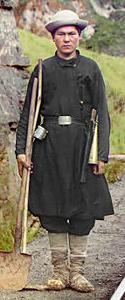
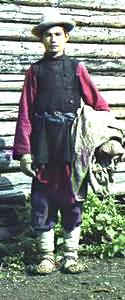
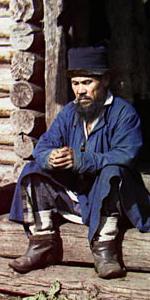 The Bashkirs numbered about 2 million at the start of the Russian Civil War, centred on the Ural Mountains, so were an important group in the Orenburg Host area. Not particularly strict Muslims, they were culturally quite close to the Volga Tartars.
The Bashkirs numbered about 2 million at the start of the Russian Civil War, centred on the Ural Mountains, so were an important group in the Orenburg Host area. Not particularly strict Muslims, they were culturally quite close to the Volga Tartars.
By the time of the Civil War their traditional dress was a mixture of Turkic and European styles.
They had never been serfs and were relatively prosperous, although they became less so as their lands were taken by Russian colonists and industry.
They were used to serving in their own military units and were good soldiers.
Bashkiria in the RCW
The Bashkirs differed from their co-religionists in the middle of Russia (Volga Tartars, Kalmyks, Kirghiz) by being motivated largely by a desire for territorial, rather than just religious and cultural, autonomy. This was because their historical lands were more fertile and had long been under much more pressure from ethnic Russians. Right from the start of the revolution they pressed for full independence, either as a separate Bashkiria, or inside a Muslim Volga-Urals state (the so-called "Idel-Ural").
In the flux of the revolution and counter-revolution a kurultai of Bashkirs was called. A council was elected, with the young Ahmed Zeke Validi (Validov, in the Russian) as their leader, and their political demands laid out. As 1917 drew to a close, the emboldened Bashkirs tried to reassert territorial control over their area, clashing frequently with Russians in the process.
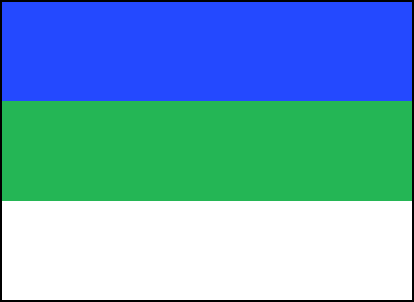
Flag of the Bashkir National Council to the left.
Ataman Dutov of the Orenburg Cossacks was prepared to accept a separate Bashkir state inside Russia, since that was consistent with Cossack separatism, and maintained good relations with Validi.
Once the Bolsheviks seized power, Lenin had agreed in principle to a separate Bashkiria. However the Soviets did not consider the Bashkir Council sufficiently politically orthodox and a Red Bashkir Soviet, firmly subordinate to the Orenburg Soviet, was established as soon as they occupied the Orenburg area in early 1918. However even the Red Bashkirs were too separatist for the Bolsheviks, so Stalin – who was in charge of nationalities in the new regime – tried to set up a great Urals-Volga Soviet merging the Bashkirs with the Tartars and Chuvash. This was vehemently rejected by the Bashkirs, who demanded autonomy.
As a result, when Dutov's Orenburg Cossacks retook much of Bashkiria, Validi set about recruiting men to fight alongside them. While the White Cossack cause aligned reasonably well, unfortunately the main White cause was resolutely anti-separatist, and the rise of reaction under Kolchak doomed the alliance. The admiral demanded the separate Bashkir Corps be disbanded, and the units placed into the main White armies.
Ideology was largely unimportant to the Bashkirs, so when the Red Army took control of most of their lands at the end of 1918, they entered negotiations to see if they could get a better deal than Kolchak would offer – which wasn't hard. In late February 1919 the bulk of the 9th Bashkir Rifle Division moved over to the Reds. In return for such a sizable force Lenin had promised a separate BashRevKom (Bashkir Revolutionary Committee) to be in control of all their lands.
Kolchak took the Bashkir homelands with his Spring offensive soon afterwards, so it wasn't until about September 1919 that he BashRevKom could assert its control over Bashkir lands. Unsurprisingly they were thwarted at every step by Russian chauvinism and the Bolsheviks' desire for centralisation, especially of industry.
In May 1920 the Soviets issued a new decree on Bashkir autonomy, which effectively removed any real control from the BashRevKom. The Bashkir opposed this, and inevitably the local Soviets reacted with seizures, punitive raids and terror – supported by the local Russian peasants, who hoped to gain more land. Equally inevitably it grew into a full-scale revolt.
Wisely the Soviets had posted all their Bashkir units a long way from Siberia, so they could play no part in the uprising. Hunger, winter and superior numbers meant the Soviets quickly suppressed the revolt, with a few hard-core Bashkirs fleeing abroad or to the Basmachis.
White Bashkir Units
It seems odd that a semi-nomadic people from Russia should provide infantry, but the White Bashkir Corps was largely that. Started in March 1918, it fought with the Orenburg Cossacks until the end of that year. Political difference meant that it then largely withdrew from combat until it defected to the Red Army in February 1919.
9th Bashkir Rifle Division at 28 December 1918 (from White Guard Almanac #8):
37th Bashkir Rifle Regiment – 1 battalion, 600 bayonets, 12 MGs
38th Bashkir Rifle Regiment – 1 battalion, 530 bayonets, 8 MGs
39th Bashkir Rifle Regiment – 2 battalions, 210 bayonets, 12 MGs
40th Bashkir Rifle Regiment – 1 battalion, 758 bayonets, 180 sabres, 11 MGs
4th Bashkir battery – 2 guns (3")
The uniform of the Bashkir Division is given at kolchakiya.ru. The style is clearly that of the KOMUCH People's Army and Czechs, which were formed around the same time and place. A cloth strip sufficed for cockade and an arm badge gave the unit and rank. Shoulderboards were plain with just a number. It seems some effort was given to dressing as well as possible, although not easy at that time, but a KOMUCH order specifying the details assumes traditional furry hats will be worn in winter until replacements can be found.
It seems that the cavalry portion (which may have been a separate regiment, despite the order of battle above) was armed with sabres only, unlike the usual Cossack front rank lancers.
The loss of the Bashkir Division was a huge blow for the Orenburg Cossacks, but the unit had clearly been unreliable for several months, so the military damage was minimised.
It seems the Orenburg Host reformed the Bashkirs after their defection, using new recruits but with a core of those members who had remained. However it does does not appear again on any orders of battle and information is sparse. Volkov mentions briefly a Bashkir Cavalry Brigade in May 1919, fighting with the Orenburg Host. One source mentions two Bashkir divizions following Ataman Dutov to Semirechensk with the Orenburg Host, but this is contradicted by others.
The magazine Vatandash mentions the 2nd Bashkir Regiment fighting at Yekaterinburg, and being presented a flag with a crescent and star in the middle and a 2 in each corner. The "2" may have been in Arabic script.
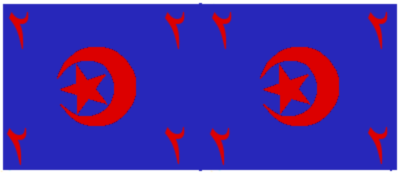
Large numbers of Bashkirs were recruited into other White formations in Siberia, both infantry and cavalry. Indeed, many were largely Bashkir and/or Tartar in composition. They tended to hold together well in the retreat in late 1919, so the Far Eastern Army had large numbers, albeit not in separate ethnic units.
Baron Ungern-Sternberg fielded a "Bashkir" unit for a while in his AKD. These were likely men recruited from the Bashkirs, and other Turkic peoples, who had fled ahead of the Red Army.
Soviet Bashkir Units
With the arrival of the defecting Bashkir Division in February 1919, an order was issued regarding their new formation in the Red Army. There was to be a 3 regiment rifle brigade, a 4 regiment cavalry division and 2 artillery divizions (one light (12 guns) and the other of a horse (4 guns) and howitzer battery (2 guns). A reserve rifle and cavalry regiment were also ordered.
Initially they fought on the Kolchak Front. In June the 1st and 2nd Bashkir Rifle Regiments and 1st and 2nd Bashkir Cavalry Regiments were sent to the 14th Army on the South Front. Large losses led to their reorganisation back into one regiment and transfer back to the east.
In September 1919 all Bashkir units were transferred to the Petrograd Front's 7th Army as a rifle brigade and cavalry division to face Iudenich. At the end of October there were 128 commanders, 4,761 rifles and sabres, 12 machine-guns and 4 guns plus 892 non-combatants. They again suffered major losses and in May 1920 the cavalry division was combined into a brigade and sent to face the Poles. The Bashkir Rifle Brigade remained in the Petrograd area until disbanded in February 1921.
 The official badge in Soviet service was a red star inside crescent on a green diamond, which was the use of fairly standard Bashkir iconography. This was worn as a sleeve emblem, with or without a border.
The official badge in Soviet service was a red star inside crescent on a green diamond, which was the use of fairly standard Bashkir iconography. This was worn as a sleeve emblem, with or without a border.
Otherwise uniforms were regulation Red Army. Both the Osprey and Deryabin books on the Red Army depict a Bashkir.
We know the 2nd Bashkir Regiment flew a red flag with the crescent and star in gold surrounded by "Пролетарии всех стран, соединяйтесь!"; "2-ой полк отдельной Башкирской Стрелковой Бригады"; "Башкирская Советская Социалистическая Республика"; and "Российская Федерация". ("Workers of all countries, unite!", "2nd Regiment Separate Bashkir Rifle Brigade", "Bashkir Soviet Socialist Republic," "Russian Federation".)
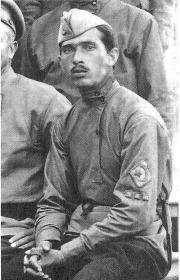
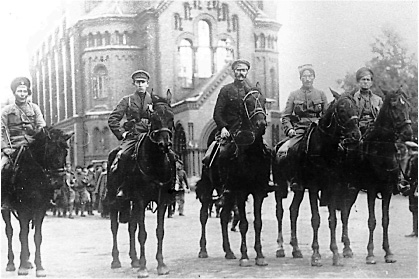
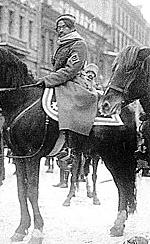
Red Bashkirs
At least one unit of the Red Bashkirs was lancers in late 1919.
Sources
"The First Experiment in Soviet National Policy: The Bashkir Republic, 1917-1920", Richard E. Pipes, Russian Review, Vol. 9, No. 4. (Oct., 1950), pp. 303-319.
"The historical-military reconstruction of uniforms and symbols of the Bashkir Forces 1917-1919", Vatandash, August 2007
Deryabin "Red Army"